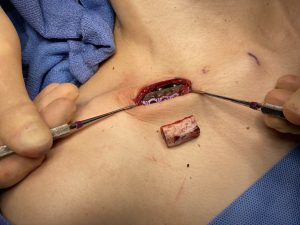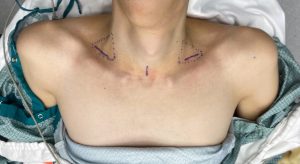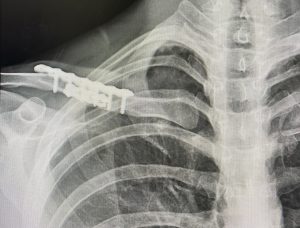Background: The functional role of the clavicles is to provide support to the shoulders. It is an elongated s-shaped bone that sits at the top of the ribcage and provides a rigid but mobile strut between the sternum and the shoulder. This mobility is due to two joints, one on each end of the bone. The outer or acromioclavicular joint allows the arm to have a greater range of motion while the inner or sternoclavicular joint has far less motion and serves more as a base for rotational movement of the clavicle.
The length of the clavicle not unsurprisingly varies with the size and gender of the person. The taller one is the longer the clavicle. Men on average, even at the same height, have slightly greater clavicle lengths and a bit more cross-sectional diameter. Less talked about is the s-shape of the clavicle. The purpose of the s shape is that it then allows for a larger rotation of the arm when it is elevated than its inner end. But not all clavicles have a similar s-shape in my observation. Some have a subtle s-shape while others have a pronounced s-shape. The taller and more square the shoulders are the straighter the clavicle is. The relevance the clavicle shape plays in shoulder narrowing surgery is unclear. But it can be surmised that the less s-shaped the bone is the less rounding effect that may occur when its length is shortened.
As the clavicle is the only long bone that is completely subcutaneous in its location it often is very visible or skeletonized in appearance. The thinner the person is the more visible it is. It is usually more visible in females then men but body weight is the key determinant in how visible it is. This is relevant in shoulder reduction surgery as the size of the plates used make their profiles potentially more visible long term and thus the risk of desiring hardware removal later is increased.
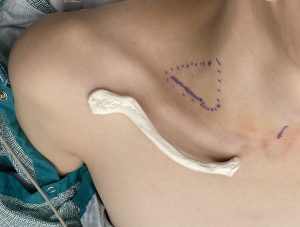
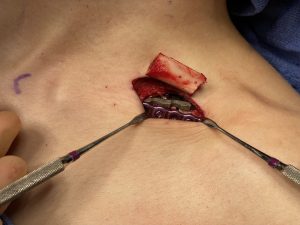
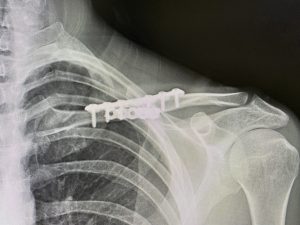
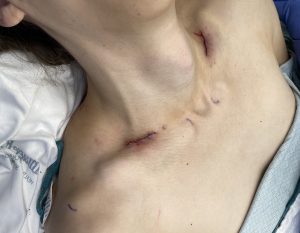
Case Highlights:
1)Tall females with square broad shoulders often have long clavicles with a minimal s-shape.
2) Thin females with skeletonized clavicles are at a higher risk of needing secondary hardware removal due to potential show.
3) The taller the patient is the more clavicle length that can be taken.
Dr. Barry Eppley
World Renowned Plastic Surgeon




